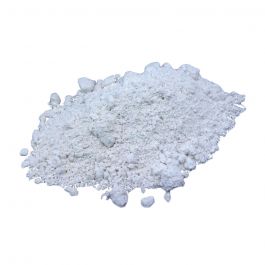- Language
- 🇺🇸
- Joined
- Mar 1, 2024
- Messages
- 339
- Reaction score
- 453
- Points
- 63
Würde Aluminium es nicht noch verdächtiger machen? dann ist es ziemlich offensichtlich, dass du etwas versteckst. aber ich weiß es nicht, ich habe noch nie Drogen verschickt.
- Language
- 🇬🇧
- Joined
- Jan 19, 2024
- Messages
- 45
- Reaction score
- 30
- Points
- 18
Viele Leute sagen, dass Aluminium Röntgenstrahlen blockiert, aber ich halte das für einen Mythos.
Blei hilft bei der Blockierung von Röntgenstrahlen aufgrund seiner Dichte von 11400kg/m³, aber Aluminium hat nur 2700kg/m³, also denke ich, es ist nutzlos
nur gut für das Einwickeln des Dope
Blei hilft bei der Blockierung von Röntgenstrahlen aufgrund seiner Dichte von 11400kg/m³, aber Aluminium hat nur 2700kg/m³, also denke ich, es ist nutzlos
nur gut für das Einwickeln des Dope
↑View previous replies…
- Language
- 🇺🇸
- Joined
- Jan 23, 2024
- Messages
- 112
- Reaction score
- 39
- Points
- 28
- Deals
- 12
Blödsinn! Alufolie blockiert keine Röntgenstrahlen.
Ihr Dopingmittel ist ein Haufen organischer Moleküle. Organisches sieht auf Röntgenstrahlen anders aus als Metall und ist unterscheidbar.
wenn sie röntgenstrahlen blockieren wollen, müssen sie ihr dopingmittel in eine ähnliche organische umhüllung eintauchen, damit es wie etwas unschuldiges aussieht. aber an dieser stelle höre ich auf, da ich nicht bereit bin, meine eigenen verdeckten methoden preiszugeben.
Ihr Dopingmittel ist ein Haufen organischer Moleküle. Organisches sieht auf Röntgenstrahlen anders aus als Metall und ist unterscheidbar.
wenn sie röntgenstrahlen blockieren wollen, müssen sie ihr dopingmittel in eine ähnliche organische umhüllung eintauchen, damit es wie etwas unschuldiges aussieht. aber an dieser stelle höre ich auf, da ich nicht bereit bin, meine eigenen verdeckten methoden preiszugeben.
- Language
- 🇺🇸
- Joined
- May 8, 2024
- Messages
- 43
- Reaction score
- 9
- Points
- 8
Theoretically aluminum can shield against electromagnetic waves, also x-ray.
But the thin layers used mostly are not enough.
There are different ways through which a material can block electromagnetic waves.
Scattering and absorption which often happens in high density, but it also works through the conductivity of a metal, and aluminum and copper for example have a good conductivity, and this allows them to absorb energy from the electromagnetic radiation pretty well, because of their free electrons.
But you would need a thick layer of aluminum, the normal foil is not going to do that well-
But the thin layers used mostly are not enough.
There are different ways through which a material can block electromagnetic waves.
Scattering and absorption which often happens in high density, but it also works through the conductivity of a metal, and aluminum and copper for example have a good conductivity, and this allows them to absorb energy from the electromagnetic radiation pretty well, because of their free electrons.
But you would need a thick layer of aluminum, the normal foil is not going to do that well-
- Language
- 🇺🇸
- Joined
- May 8, 2024
- Messages
- 43
- Reaction score
- 9
- Points
- 8
Also the shielding ability of aluminum is better (lot better) at lower frequencies, and thickness would need to be increased a lot to shield effectively against x-rays. Also at such high frequencies like x-ray denser materials with high Z are normally required because they have a higher probability of interacting with high energy electromagnetic waves, but theoretically every conductor can block them t some point, also aluminum, but you need a very thick layer which is not practical.

